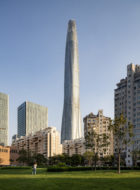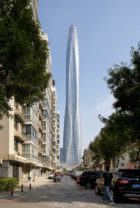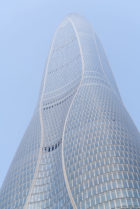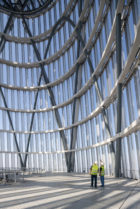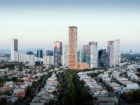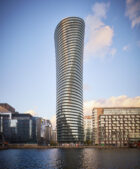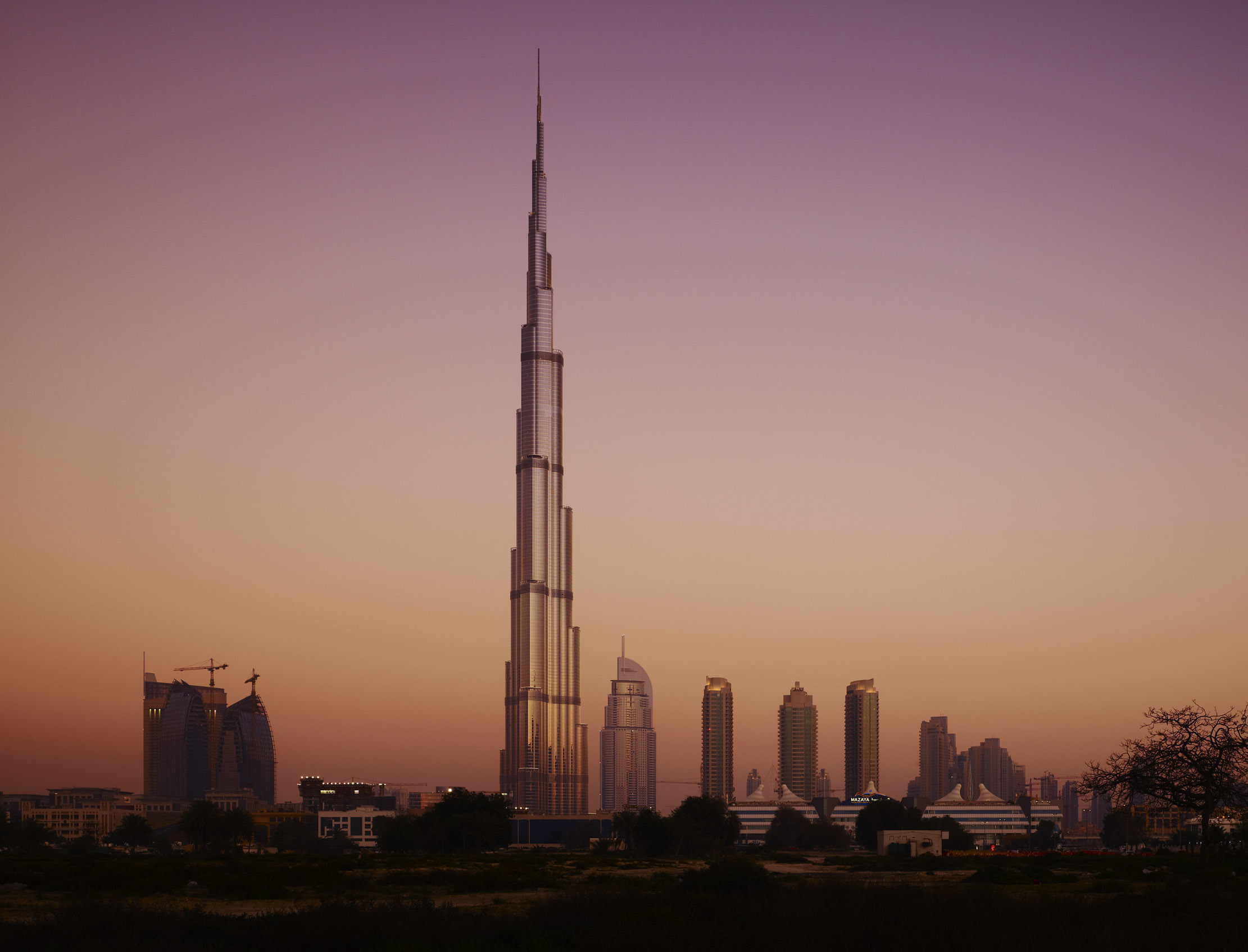An inside-out approach
The 530-meter-tall skyscraper is a striking new landmark in the Tianjin Economic-Technological Development Area (TEDA). The project supports the TEDA masterplan by anchoring the office, hotel, retail, and housing district with a supertall tower and retail structure, on the axis of the government center and local transit station. The 97-story skyscraper houses Class-A offices, 300 luxury serviced apartments, and a five-star, 350-room Rosewood hotel.
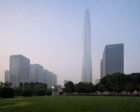
The tower’s design synthesizes architectural, structural, and functional requirements. Square in plan, with rounded corners, the geometry maximizes the efficiencies of its three programmatic uses—office, hotel, and apartments—arranged to match the optimum spans for each of these uses. With longer lease spans for the office floors, and shorter spans to maximize views at the apartment and hotel levels. The tower’s curving facade is a result of techniques used to optimize structural efficiency. Its crystalline glass panels stretch from the lobby to the crown to give the building’s integrated design a bold monolithic expression.
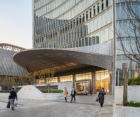
The office space is organized in a clear, consistent configuration from the core to the exterior wall, and access is efficient, with a square central bank of local elevators serving three zones of 36 office floors. The apartments have private elevators, with access from shuttles to a sky lobby, and the generous floor plates enable flexible room layouts. The hotel, accessed from its own sky lobby, is best suited to the smaller floor plates, with corners for panoramic views.
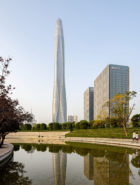
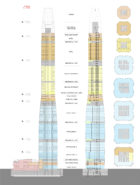
At ground level, three landscaped vehicle drop-offs provide access to the tower’s respective uses, and sleek glass-and-steel canopies extend to shelter visitors. A five-story luxury retail mall covers nearly half the site and provides interior links to the office tower and hotel lobbies.

There isn’t any way that this building would have been achieved without a very close collaboration between architects and engineers, and even interior designers.



